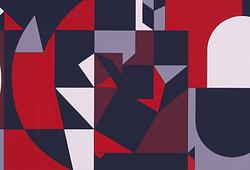Ernst Mether-Borgström
"IN THE CAFÉ".
Signed 1955. Oil on board 50x80 cm.
Provenance
Launo & Tuovi Laakkonen Collection
More information
Ernst Mether-Borgström was born to be an artist. It came as no surprise that he went to study at the Central School of Industrial Arts, where the classes focused on drawing and graphic art. Alongside his career as a freelance artist, he earned his living as a commercial artist. In the 1940s, he finally gave priority to painting and was enrolled at the painting department of the School of the Fine Arts Academy of Finland. One of his fellow students was Åke Mattas, who was always eager to discuss the essence and objectives of art with him.
Throughout the 1940s and 1950s, Mether-Borgström focused largely on painting portraits, partly because they were a genre that came naturally to him and partly because it was a good source of income. His portraits showed keen psychological observations tinged with humour and gentleness. Another important subject was urban landscapes, which helped him develop a distinct sense of form, line and light. The landscapes became more and more abstract and, from 1964 on, turned into fully nonfigurative style using a concrete form. He produced his earliest graphic work in concrete art as early as in 1946. Up to 1964, Mether-Borgström's art consisted of two parallel styles, which is explained by his roots in classical training. The great push for a new style came during his four-month stay in Paris with his wife Kiko in 1949. He had planned to study the great impressionists but ended up visiting one exhibition after another. Kandinsky, Klee, Miró, Gris, Magnelli, Herbin and Vasarely had decisive impact on his art. ‘In four months in Paris I’ve learnt more than I did in ten years in Finland’ (Leena Lindqvist, Ernst Mether-Borgström, 1996).
Mether-Borgström got his highest recognition in 1958 when he was chosen to represent Finland at the Venice Biennale with nonfigurative paintings alone. He was the first Finnish abstract painter to have his works shown at the Biennale.
The painting now on sale was done in 1955, during Mether-Borgström’s ‘parallel period’, a few years before the 1958 Venice Biennale. The painting depicts two men. The figures and the background are painted in rectangular patches of colour covering the entire picture, which is half figurative, half abstract, and clearly inspired by Paul Klee, whom Mether-Borgström held in high esteem. At that time, Mether-Borgström was a frequent visitor at the Academic Bookstore in Helsinki, where he would pore over international art magazines and their articles on the latest trends in art. Paul Klee had attracted great attention right after the Second World War and his works were being displayed at numerous exhibitions in Europe. Both Mether-Borgström and Klee showed humour and an alternation of the figurative and the abstract in their works, and both were masters of graphic expression. The colour scheme of ‘The Chess Players’ is also very similar to that applied by Klee.
After 1964, Mether-Borgström developed a completely concrete style characterized by playfulness and bright colours.






































